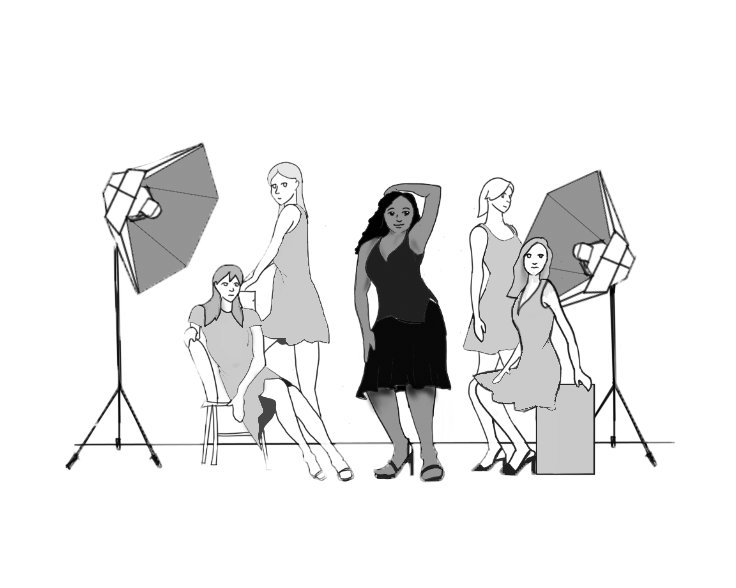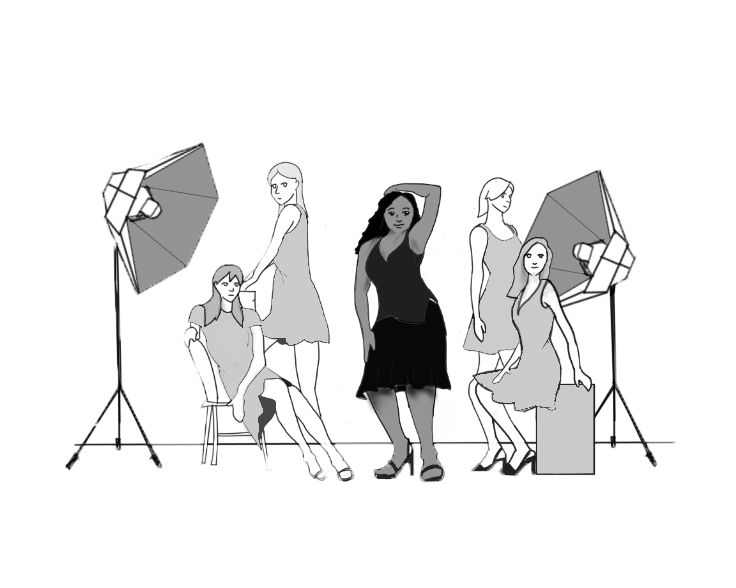

Models strut one by one down the catwalk. They float through magazines. They are plastered on the advertisements that constantly surround us. Their faces blur, but one thing is clear: their lack of representation. The models that we see are predominantly white, and minorities are hardly seen at all.
Even though over half of the people born today in the U.S. are minorities, the Runway Diversity Report of 2016 concluded, “less than one fourth of all models were people of color.” For instance, in one of its fashion shows popular designer brand Yves Saint Laurent was only 5 percent non-white. Then of the models that had the most bookings for Fall 2016, only two out of 10 were people of color. And that’s only the beginning for the modeling industry as a whole.
Anna-Mari Almila, a researcher who focuses on sociological topics related to fashion, voices her thoughts on diversity: “There is an astonishingly persistent inequality at the heart of fashion businesses, and it definitely is more difficult to ‘make it,’ or even to get any work at all, if you are from an ethnic minority,” she said. “I think this is highly problematic and reflects the structural racism that is part of most societies. If a society is racist, its fashion industry is hardly going to be anything else than racist.”
Oftentimes, when non-white models are chosen it comes with a certain connotation — “a type.” In an interview with The Guardian, model booker Annie Walshaw said, “When the client sends you a brief you know straight away they’re not talking about a black girl. They say they want ‘a girl with long hair, who looks like a fairy’ or something. When they want a black girl, they will say ‘looking for mixed-race girl, tribal-prints location, desert scene.’”
Young people of minorities can be turned off to the idea of being a model at all because they don’t see their group represented, and those that are models have a harder time finding work because they have to fit into stricter criteria that others in their industry don’t have to deal with. Not hiring these people then makes those models even more competitive for their jobs, creating a hostile environment in the industry. Additionally, modeling agents are discouraged from hiring minorities because the models will likely get fewer jobs and, thus, earn the agent
less money. This creates a cycle of lack of representation.
“When the client sends you a brief you know straight away they’re not talking about a black girl. They say they want ‘a girl with long hair, who looks like a fairy’ or something. When they want a black girl, they will say ‘looking for mixed-race girl, tribal-prints location, desert scene.’”
Vicky Yang, a talent agent at The Society Management in New York City, speaks about the consequences of unidimensional representation in modeling: “Homogeneity always disables us from empathizing with the history and plight of others, and that leads to unnecessary prejudices and divisions that paralyze global progress.”
Almila agrees, “This is only one factor in society that reflects a completely biased world image. Visible people are white and thin, and if brown people become visible, it is more likely to be in a negative context. Unconscious biases that the imagery we are exposed to are extremely dangerous as they are largely hidden . . . Unconscious, unadmitted bias is the most dangerous one in my opinion, and that is why calling it out is so important.”
Yet, we acknowledge that there have been many attempts to change the status quo. On the runway for Yeezy Season 3, designer Kanye West walked only people of color. There have also been campaigns to promote more diversity. One campaign, “Black Mirror,” was created by African model Deddeh Howard after modeling agencies repeatedly told her that they, “Already have a black girl.”
In the campaign, Deddeh replaced white models in expert recreations of famous fashion advertisements in order to prove that models of color are just as capable.
“Over my seven years working within the industry, I have witnessed it gradually improving upon inclusivity and diversity.” Yang said, “as a minority and immigrant-to-naturalized US citizen myself, the evolution was heartening to observe. The concept of tokenism still exists, but there is definitely a stronger and stronger embrace of ethnic, cultural, and physical differences with each proceeding year.”
The divide in the modeling industry is stark, but people have more power than they give themselves credit for. Money talks in this industry, and by acknowledging this and holding designers accountable, change can happen. I envision a future in modeling with more diversity, perspectives and acceptance.





